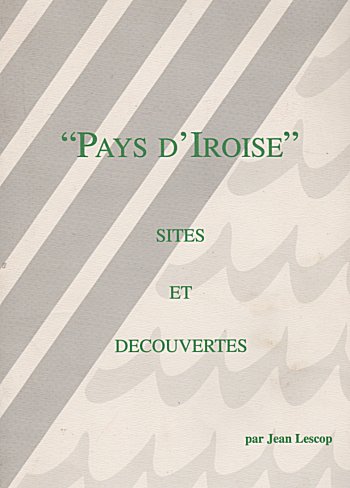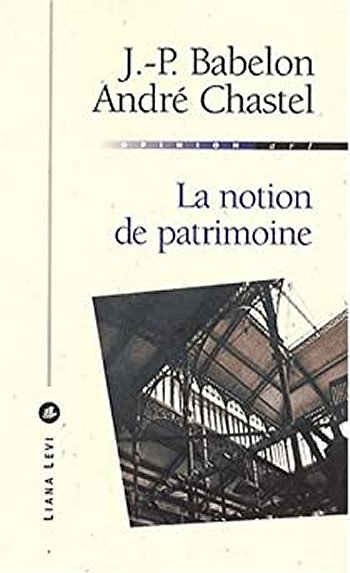



Heritage and Internet
|
Creating and developing a website about the heritage of a territory comprising nineteen municipalities is certainly an ambitious if not risky undertaking. It obviously requires the collaboration of a large number of people of good will. But not only that. Indeed, the very purpose of this project is controversial. The heritage, of course, everyone agrees to preserve and maintain it. When choosing which elements belong to it, many questions arise. It is necessary to agree and make a choice. Therefore, to use selection criteria concerning the very notion of heritage ( in french : patrimoine ). The Latin origin of the word, patrimonium - the property inherited from the father - already gives a first indication. The region's heritage includes elements related to its history : dolmens and castles, small chapels of the pardons and medieval houses, seaweed ovens, lighthouses and coastguard watch posts. However, the number of different types is such that it is necessary to make an additional choice : are we going to consider German blockhouses as part of our heritage ? They were built by foreigners, but they are on our territory. Are they too recent ? But the notion of time is very relative. Their belonging to a former enemy still gives rise to antipahies ? But no gun is arming them anymore and they are rather an object of curiosity. They are not beautiful, some would say. They are concrete warts on our coasts. The proof ? In Toulbroc'h, the casemates were all tagged because they were ugly. But soon, who knows, it may be precisely these sometimes superb tags that will make them part of our heritage... 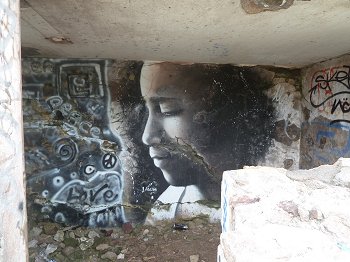 Toulbroc'h tags in Locmaria-Plouzané We therefore approach here another notion, particularly difficult to define, the aesthetics. As soon as it was inaugurated in 2011, the Térénez bridge, for example, became part of our national heritage in the same way as the Viaur or Garabit viaducts. Its architectural beauty seems to be recognized by all, even more than the prowess represented by its construction. Beauty would therefore undoubtedly prevail over the old and the remarkable. But is a windmill more beautiful than a wind turbine? A menhir than a water tower? Is it a question of size, of dimensions ? There is indeed a small heritage . In Le Conquet, for example, along a twenty-metre stretch of Rue Clemenceau, the attentive walker will discern three discreet elements of the small heritage of daily life in the past : in the wall of a house a ring which was formerly used to tie up horses, next to a threshold a foot-scraper on which one scraped the muddy soles of one's hooves before entering one's home, and further on a sighing hole through which the coalman poured the sacks of his horse-drawn cart in order to fill up the heap of coal situated in the cellar. 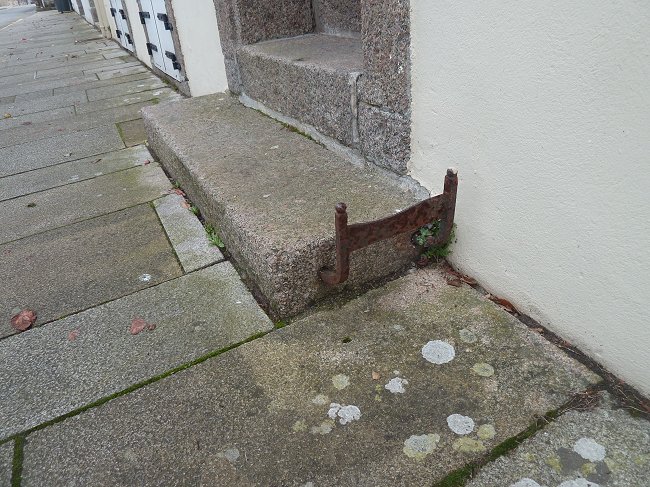 The only foot-scraper in Le Conquet. This accessory of the entrances of houses, still very common a century ago, has become rare since the streets, paved or tarred, are no longer muddy. But it is so discreet that one wonders who pays any attention to it today. Yet it is a witness to the daily life of our ancestors. Elsewhere it is a paddle wheel or a millstone, a sundial, a spinning wheel or a clog maker's parlour... In fact, everything depends on the walker himself, his attention, his sensitivity, his culture and also his imagination. The Museum of Brittany, in Rennes, presents a small Greek gold coin discovered incidental among seaweed in 1959 in Lampaul-Ploudalmézeau and attributed to the Pytheas expedition (around 320 BC). Isn't ipso facto part of our heritage1 ? 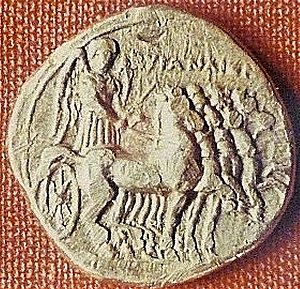 The golden statere found in Lampaul-Ploudalmézeau and exhibited at the Museum of Brittany, in Rennes Photo: Prehistory Museum of Penmarc'h ( Finistère)
" Heritage is not a material reality, but a look at certain realities, material or not ", say Alain Croix and Jean-Yves Veillard in the preface to their Dictionary of Breton heritage2. And they add : a collection of old stones is not, by nature, heritage. How else can we understand that for a long time it attracted only indifference, and that many others disappeared? These old stones become heritage because one day a new look was taken on them, giving them meaning, a usefulness at least moral or cultural."
After the huge fire that struck Notre-Dame Cathedral in Paris in 2019, and then its repercussions around the world, it can be said that the notion of heritage is simply linked to society and the importance it attaches to natural or cultural elements surrounding it. It constantly varies according to places and times. It even disappears completely in the face of other priorities, as we often see in times of war or religious intolerance. Let us remember, for example, the shelling of Reims Cathedral by German artillery during the First World War or the destruction of statues and temples dating back thousands of years, until recently, in Asia Minor. Closer to home, the chevet of the abbey church at Pointe St-Mathieu was destroyed to make way for a lighthouse inaugurated in 1835. A sense, a usefulness, this is undoubtedly the key to selecting heritage elements. There are therefore also intangible realities such as customs, traditions and linguistic expressions. "Reducing heritage to stone and artwork involves scholarly learning, not even accessible in the school setting in most cases. On the other hand, landscape, dance, music, language, clothing are, even more or less richly, accessible to all. They give to everyone, to the most modest of communities, to the poorest of the communes, a heritage existence." specify the two authors already mentioned. The scope of the notion of heritage is becoming immense... And its conservation calls out to us: We do not inherit the earth from our parents, we borrow it from our children said Saint-Exupéry. For the general public, but particularly for tourists or schoolchildren seeking to discover a region, having access to a website about its heritage can therefore be very useful. However, for the website designers, things are getting even more complicated. Indeed, in addition to the difficulty of making the previous choices, there are cases of conscience. Access to certain elements of the heritage may, for example, be more or less dangerous for the visitor and sometimes even for the conservation of the monument. This dangerousness must be assessed and either stated in the corresponding text, or resigned to miss that element. Others are located out of public view, inside private property. And if some owners would not oppose requests for visits, there are still some who would be annoyed and could even in some cases be led to make the heritage concerned disappear. The desire to protect it would then lead to the opposite effect. In Porspoder, we have the case of a farmer who destroyed a megalith in his field around 1930, even though it was classified as a historical monument. New choices are therefore necessary and everyone must be well aware of the limits imposed by this requirement. Finally, creating such a website requires not only going and take pictures of each element described, but above all to collate all the documentation. The Iroise country is not a new land. A number of researchers, archaeologists, local historians and also artists have explored this region for decades and produced publications3 or works of art. Others, without ever publishing anything, have collected documents, articles and postcards, whose knowledge is precious. We must pay tribute to them and always mention their work, not only out of simple honesty, but above all out of gratitude for a discreet and ignored work that, very often, is the fruit of a lifetime. For the same reason, when a website already describes an element of heritage in sufficient detail, it would be unnecessary to duplicate it. A link to this website is sufficient and respects the work already done. But what does the Internet bring ? There are publications, tourist guides, information points and tourist offices in most municipalities. Is a website, virtual of course, essential ? Essential, maybe not really. We can always do without a technical evolution. Interesting, however, and for several reasons : - A website is easy to design with several people. Each contributor provides texts and photos, the webmaster only has to put them online. They can be translated into several languages. - The pages can always be modified : errors can be corrected at any time, photos can be added, access maps changed if necessary. Compared to a paper publication, this is a considerable advantage because a well-maintained website is constantly adapting and evolving. It does not remain frozen. - It is easily accessible to the public. Computers, mobiles, tablets or smartphones make it possible today to obtain information very quickly and the Internet is practically everywhere, in all families. Access is possible from all over the world. - For each heritage item described on a website, the QR-code, or flashcode, technique can be used (see its use in our news section). A few more words about this site. Patrimoine d'Iroise is not quite a site like any other: totally independent of any organization, it's an entirely home-made site, which doesn't use any site-building software. It contains no advertising and will never deposit a single cookie on a user's device. Created in 2014 with just a few pages describing the dolmens and menhirs of the Pays d'Iroise, it has diversified by benefiting from the work done by several local specialists. The server that hosts it is located in Germany and anonymously delivers monthly statistics on the number of connections and the country from which they originate. After a slow start, the site's audience seems to have stabilized. Depending on the season, between 50,000 and 120,000 pages are consulted each month. However, more than half of these are accessed by robots, which crawl all the pages in order to reference them. Connections come from all over the world. Mostly from Europe, but also from Singapore and Hong Kong. Monthly statistics  Nombre de visiteurs du site, en bleu, et de pages consultées, en ocre, chaque mois depuis septembre 2014 jusqu'en septembre 2025 Half the connections come from France, and around a quarter from the USA, where most of the robots are based. Le reste provient de Grande Bretagne, d'Allemagne et de tous les autres pays, y compris les plus lointains. Le Pays d'Iroise s'exporte bien. That's why this participative work is becoming more useful and exciting by the day.
Yannick Loukianoff

(1) It is a gold Greek coin discovered on the beach, enclosed in the crampons of a kelp stranded among marine deposits. This currency had been minted in Cyrene, Libyan city, between 322 and 315 BC. Contemporary of Pythéas' journey, it is obviously not an absolute proof of it. But given our current knowledge of Atlantic navigation at that time, the probability of being correlated is high.
- See on this site the document of the late Georges Tanneau, sailor-historian of Guilvinec, dedicated to Pytheas, the Massaliote. - See also the article on Perseus devoted in 1961 to this discovery in the Bulletin de la Société préhistorique française. (2) "Dictionary of Breton Heritage",under the direction of Alain Croix and Jean-Yves Veillard, Presses Universitaires de Rennes, 2013.
(3) In particular, we would like to mention "Pays d'Iroise, sites et découvertes", below, by Jean LESCOP, published in 1994 by the CCPI, at a time when it only included 12 municipalities. The author, who spoke Breton fluently, carried out considerable work during his retirement in terms of cadastral research, linguistic interpretation, and then discoveries on the ground. Une passion dévorante, à laquelle il s'est consacré bénévolement, dont le fruit sert toujours de base à la confection des pages de ce site.

Example of QR-code of our page on the menhir of Kerloas |
